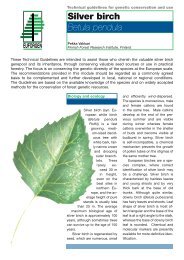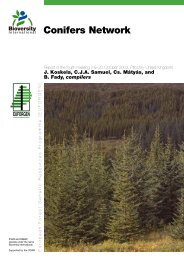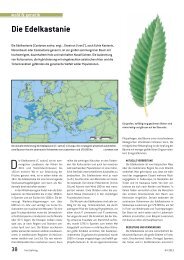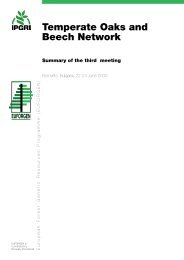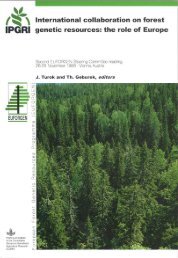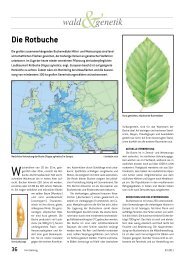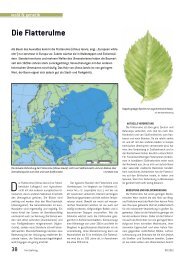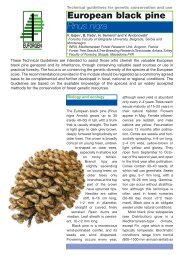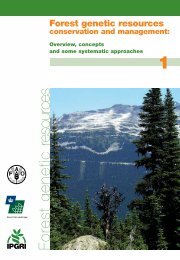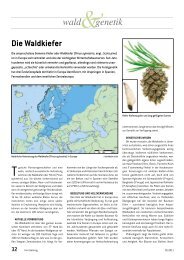Download PDF - Euforgen
Download PDF - Euforgen
Download PDF - Euforgen
You also want an ePaper? Increase the reach of your titles
YUMPU automatically turns print PDFs into web optimized ePapers that Google loves.
48 EUFQRGEN: Quercus suberNErWQRK1.2.3.4.5.6.7.8.9.10.Cuenca del riD Ulia (C/PO)Potes (S)Bozoo (BU)Sestrica (2)Foncastin (V A)Hoyo de Manzanares (M)Sierra Calderona (CS)Pinet (V)Sierra de Carrascoy (MU)Haza de Lino (GR)Fig. 1. Location of the studied marginal popuiations of cork oak. The map aiso showsthe distribution area of the species in Spain. Main stands are in black.the whole forest area. This objective should be fulfilled with complete inventories.However, the approach chosen provides fully sufficient knowledge of structuraland dynamic features.In each plot, the following data were recorded:• number of trees present in the plot• height and diameter at breast height (dbh) measured on each tree• regeneration of tree species: all individuals below 1 m height.Another parameter considered was the floristic diversity, expressed as Margalefindex H (Margalef 1980), being:NIH = log2 .N,!·N2!· ... ·N.,!where N is the total number of trees of all species, and N 1, N2 ... , Ns is the respectivenumber of trees of each species. This index has been chosen because it takes intoaccount the population size, not only the relative proportion between species. It hasbeen calculated with densities of mature trees, without considering seedlings.ResultsIn all studied populations, cork oak trees could be grouped into a few diameterclasses. In all cases, 70% of adult trees were included in three consecutive classes.In some populations, this concentration of diameter classes is even more obvious.Around 80% of all trees in Sierra Calderona had diameters under 20 cm (diameterclasses I and II); in Bozoo and Sestrica the same classes included 84% and 92%,respectively, of the total number of oaks. Moreover, in the three mentionedpopulations the origin of the trees was mostly vegetative - more than 70% fromsprouts, while in the rest of the populations this proportion was up to 40%.These features are caused by the past management, mainly charcoal andfirewood extraction, which gave rise to nearly even-aged stands. In the threementioned populations (Sierra Calderona, Bozoo and Sestrica) the forest was



